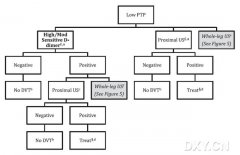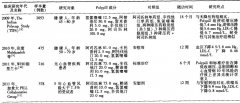读医学网
2011年AHA/ASA中风一级预防指南
发布时间:2014-05-19 10:34 类别:神经系统疾病 标签:ratio 1.11 female adjusted 来源:丁香园
Stroke remains a major healthcare problem. Its human and economic toll is staggering. Approximately 795 000 people in the United States have a stroke each year, of which about 610 000 are a first attack; and 6.4 million Americans are stroke survivors.1 Stroke is also estimated to result in 134 000 deaths annually and is the third leading cause of death in the nation behind heart disease and cancer. Progress has been made in reducing deaths from stroke. Along with other healthcare organizations, the American Heart Association (AHA) set the goal of decreasing cardiovascular and stroke mortality by 25% over 10 years. Between 1996 and 2006 the death rate for stroke fell by 33.5%, with the total number of stroke deaths declining by 18.4%.1 The goal of a 25% reduction was exceeded in 2008. The declines in stroke death rates, however, were greater in men than in women (age-adjusted male-to-female ratio decreasing from 1.11 to 1.03). Despite overall declines in stroke deaths, stroke incidence may be increasing. From 1988 to 1997 the age-adjusted stroke hospitalization rate grew 18.6% (from 560 to 664 per 10 000), while the total number of stroke hospitalizations increased 38.6% (from 592 811 to 821 760 annually). In 2010, the cost of stroke is estimated at $73.7 billion (direct and indirect costs), with a mean lifetime cost estimated at $140 048. Stroke is also a leading cause of functional impairments, with 20% of survivors requiring institutional care after months and 15% to 30% being permanently disabled. Stroke is a life-changing event that affects not only stroke patients themselves but their family members and caregivers as well. Utility analyses show that a major stroke is viewed by more than half of those at risk as being worse than death. Despite the advent of treatment of selected patients with acute ischemic stroke with intravenous tissue-type plasminogen activator and the promise of other acute therapies, effective prevention remains the best approach for reducing the burden of stroke. Primary prevention is particularly important because 77% of strokes are first events. The age-specific incidence of major stroke in Oxfordshire, United Kingdom, fell by 40% over a 20-year period with increased use of preventive treatments and general reductions in risk factors. Those who practice a healthy lifestyle have an 80% lower risk of a first stroke compared with those who do not. As discussed in detail in the sections that follow, persons at high risk for or prone to stroke can now be identified and targeted for specific interventions.
This guideline provides an overview of the evidence on various established and emerging stroke risk factors and represents a complete revision of the 2006 statement on this topic. One important change is the broader scope of this new guideline.Whereas the 2006 statement focused on ischemic stroke, because of the overlap of risk factors and prevention strategies, this guideline also addresses hemorrhagic stroke, primarily focusing on an individual patient– oriented approach to stroke prevention. This contrasts with a population-based approach in which “…the entire distribution of risk factors in the population is shifted to lower levels through population-wide interventions” and is reflected in the AHA statement on improving cardiovascular health at the community level.




